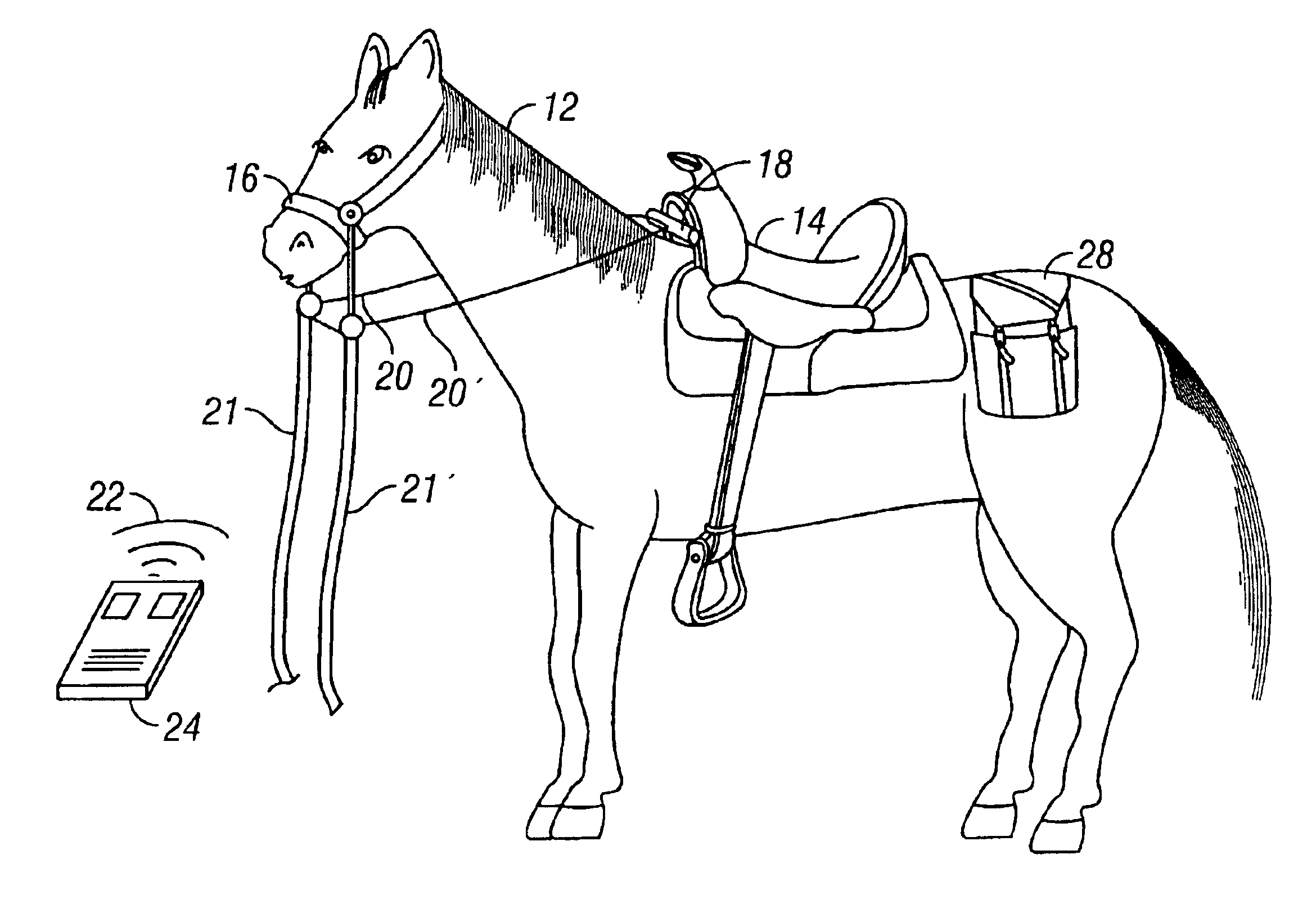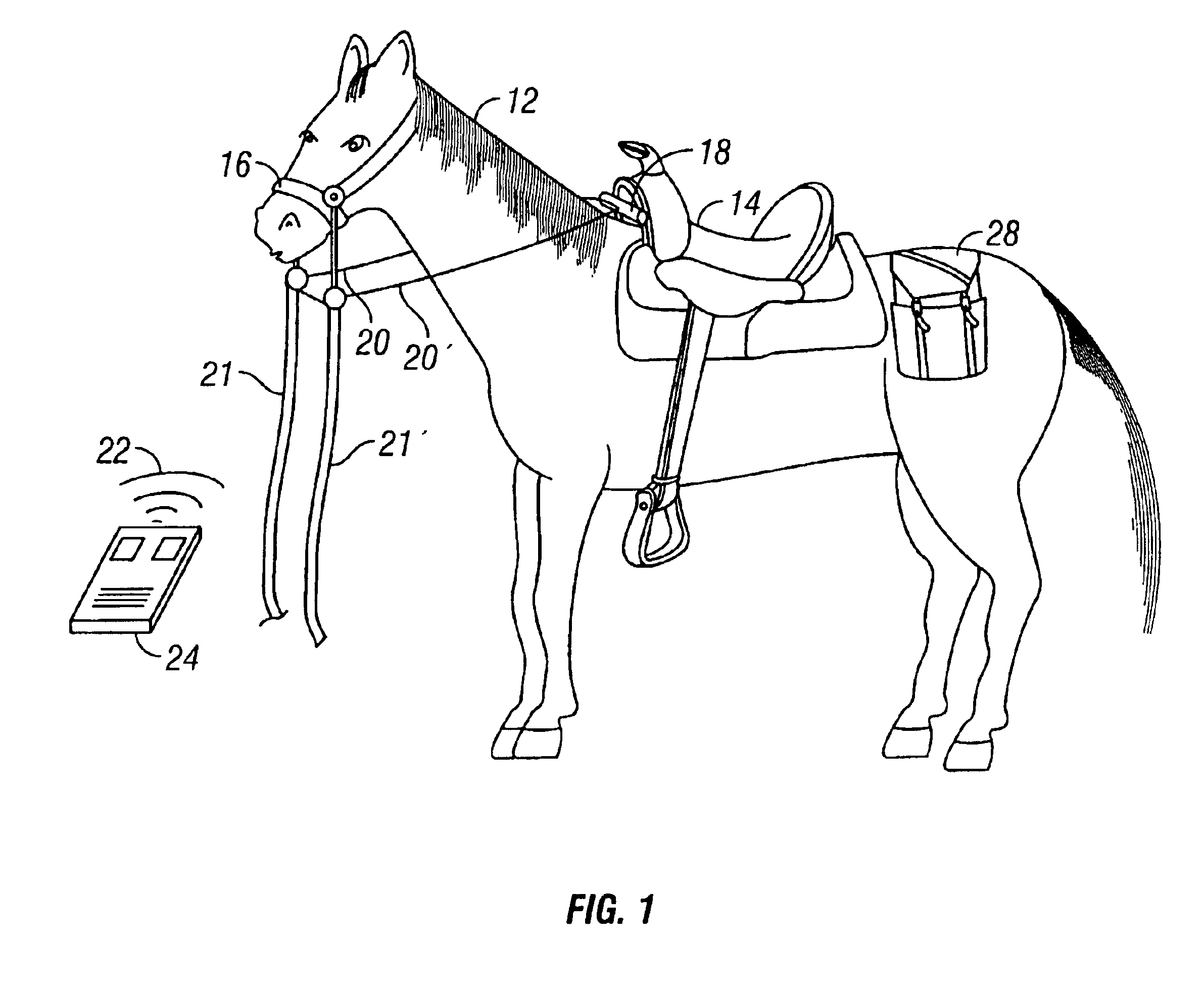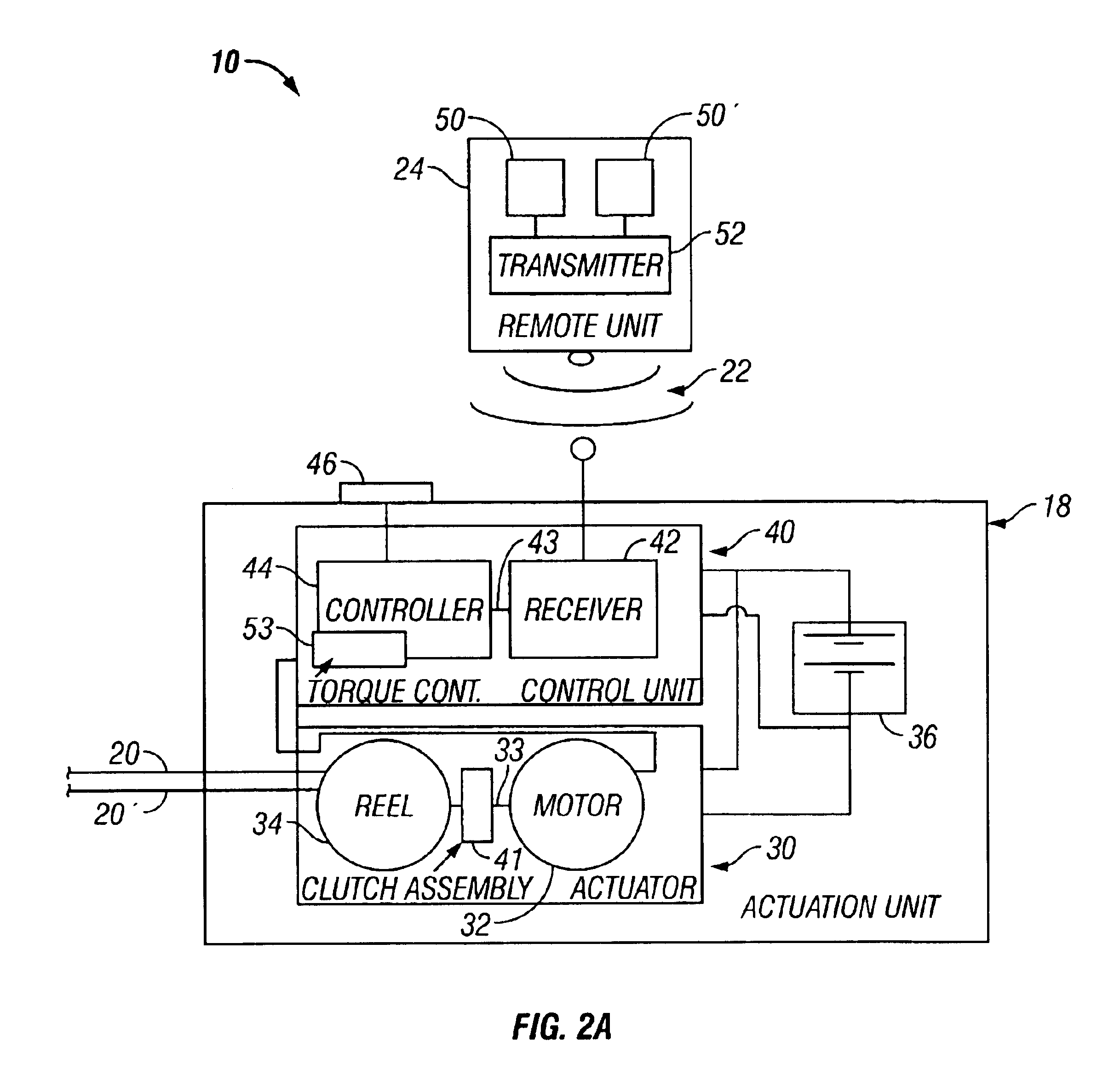Apparatus and method for controlling an animal
a technology of apparatus and method, applied in the field of apparatus and method for controlling an animal, can solve the problems of inconvenient or impossible tying a horse with reins to a stationary structure, animal unattended, and rider losing control of the horse afterward,
- Summary
- Abstract
- Description
- Claims
- Application Information
AI Technical Summary
Benefits of technology
Problems solved by technology
Method used
Image
Examples
Embodiment Construction
An embodiment of the present invention is illustrated in FIG. 1. In the example of FIG. 1, a horse 12 is fitted with a saddle 14 and a bridle 16. The bridle 16 is connected to an actuation unit 18 with a first line 20 and a second line 20' so that the actuation unit 18 may apply a control stimulus to the bridle. A first rein 21 and a second rein 21' may be coupled to the bridle 16. The horse 12 may also be fitted with a saddlebag 28. The actuation unit 18 is electrically coupled to a remote signal unit 24 by a remote signal 22. The actuation unit 18 is mechanically coupled to the first line 20 and the second line 20'.
Referring to FIG. 2A, a horse controlling apparatus 10 includes the remote signal unit 24 and the actuation unit 18 coupled by the remote signal 22. The actuation unit 18 includes a control unit 40 for receiving the remote signal 22, and an actuator 30. The control unit 40 and the actuator 30 are powered by a battery 36. The control unit 40 further includes a receiver 4...
PUM
 Login to View More
Login to View More Abstract
Description
Claims
Application Information
 Login to View More
Login to View More - R&D
- Intellectual Property
- Life Sciences
- Materials
- Tech Scout
- Unparalleled Data Quality
- Higher Quality Content
- 60% Fewer Hallucinations
Browse by: Latest US Patents, China's latest patents, Technical Efficacy Thesaurus, Application Domain, Technology Topic, Popular Technical Reports.
© 2025 PatSnap. All rights reserved.Legal|Privacy policy|Modern Slavery Act Transparency Statement|Sitemap|About US| Contact US: help@patsnap.com



